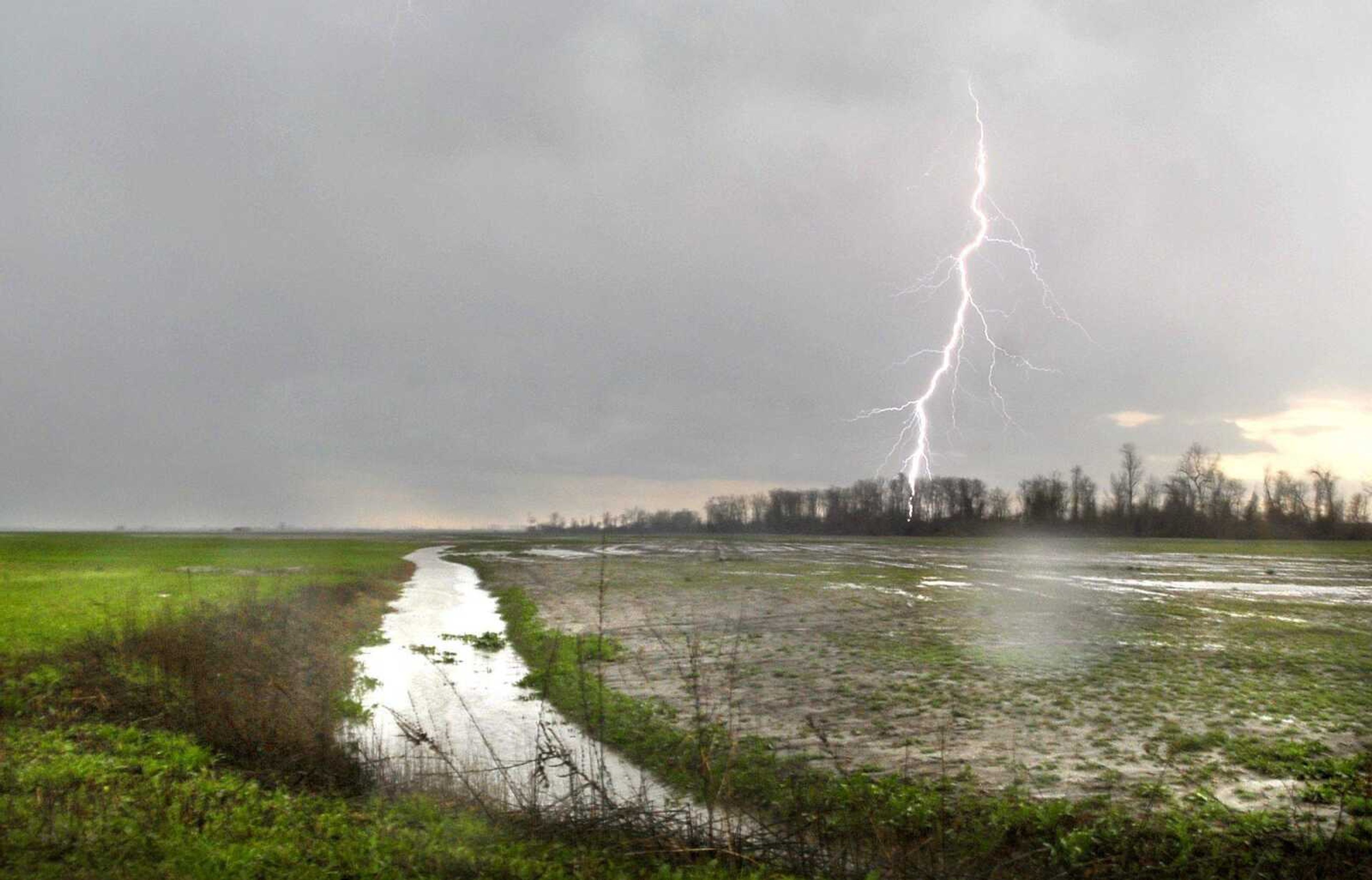Lawsuits hope to curtail nutrient runoff feeding 'dead zone' in Gulf of Mexico
Environmentalists are escalating their fight against a growing area in the Gulf of Mexico where excessive algae is choking out marine life. Much of what feeds the algae in the "dead zone" comes from farms in Missouri and Illinois. Forcing the EPA to reduce nutrient pollution in the Mississippi River Basin is the goal of two lawsuits filed this week by a coalition of environmental groups...
Environmentalists are escalating their fight against a growing area in the Gulf of Mexico where excessive algae is choking out marine life.
Much of what feeds the algae in the "dead zone" comes from farms in Missouri and Illinois.
Forcing the EPA to reduce nutrient pollution in the Mississippi River Basin is the goal of two lawsuits filed this week by a coalition of environmental groups.
Since 1985, the dead zone has doubled in size. The zone covered 6,765 square miles in 2011, according to Eugene Turner, a professor at Louisiana State University who annually measures the dead zone, which stretches across the Louisiana coast toward Texas.
Both fertilizer runoff from farm fields and sewage treatment plants emptying into the river contribute to the nitrogen and phosphorus loads it carries downstream.
Missouri is ranked fourth in nitrogen contributions and second in phosphorus contributions in the Mississippi River Basin, according to the U.S. Geological Survey. Illinois ranks as the No. 1 source of both nitrogen and phosphorus.
The first of two suits, filed in federal court by the Natural Resources Defense Council on behalf of several environmental groups known as the Mississippi River Collaborative, challenges the EPA to establish a baseline standard for how much of the nutrients should be allowed in the Mississippi River and adjoining waters.
The second is aimed at requiring municipal wastewater treatment plants to remove at least some of the nutrients before the water is discharged into rivers.
"The Mississippi River has long been treated as the nation's sewer. The Gulf must stop being a sacrifice zone for the nation," said Matt Rota, director of science and water policy for one of the groups involved in the suit, the Gulf Restoration Network.
Environmental advocates say wastewater treatment standards, which haven't changed since 1985, need to be updated to reflect technologies now available.
"We believe now the technology exists and is affordable to remove these nutrients, which hasn't been part of expectations in the past," said Glynnis Collins, executive director of the Illinois-based environmental group Prairie Rivers Network.
Cape Girardeau's new wastewater treatment plant, scheduled for completion in 2014, takes into account the need to treat for the nutrients in the future, said Public Works director Tim Gramling.
"We told them we want to design it so that if those regulations come through, we can do a minor retrofit, instead of a major overhaul to get that done," he said.
After it's treated, and in some instances without treatment, the city's wastewater is released into the Mississippi River. Thirty to 40 times a year, heavy amounts of flow, typically caused by rain, result in a bypass of the plant, dumping wastewater directly into the river.
Once the plant is built, Gramling said, that practice will no longer be necessary.
Urban sources, like wastewater treatment plants, account for 9 to 12 percent of the nitrogen and phosphorus delivered to the Gulf, according to the U.S. Geological Survey.
The lawsuits against the EPA won't directly address agricultural practices, estimated to cause 70 percent of nutrient pollution by the U.S. Geological Survey.
"We are working to try to strengthen conservation programs in the farm bill to better target resources to areas in the Mississippi River Basin. Because the ag sector is not regulated by the Clean Water Act, we feel like this is the best avenue for us to take at this time," said Susan Heathcote, water program director at the Iowa Environmental Council, a not-for-profit advocacy group that is also party to the lawsuits.
The Natural Resources Conservation Service, part of the U.S. Department of Agriculture, provided about $100,000 to landowners in Cape Girardeau and Perry counties making efforts to reduce nutrient pollution last year, said James Hunt, district conservationist with NRCS in Jackson.
Hunt works with farmers to help them figure more accurate amounts of nutrients to apply to their fields based on soil tests.
"A lot of landowners have said, 'This is what I've always put on, so this is what I'm putting on now.' In some cases we find they can apply less than they have in the past," he said. GPS technology also allows farmers to apply different nutrients to different portions of their fields, rather than treating an entire area with the same amount, he said.
The Continuous Conservation Reserve Program, administered by the USDA's Farm Service Agency, also provides financial assistance to landowners who take ground out of production and plant grasses to serve as filter strips to remove nutrients from the water before it reaches the river.
Financial incentives are also available for farmers who plant cover crops, like rye, oats or clover, after their corn or soybeans are harvested. That practice helps control erosion and removes excess nutrients from the soil, Hunt said.
The lawsuits are the first national legal effort to force the EPA to address nutrient pollution. In 1998, the EPA called on states to adopt specific limits on nitrogen and phosphorus pollution or it would enact its own by 2003. But environmental groups say states ignored the deadline.
The review of Missouri's water quality standards is underway, said Renee Bungart of the Missouri Department of Natural Resources.
mmiller@semisourian.com
388-3646
Pertinent address:
480 West Jackson Trail, Jackson, MO
Connect with the Southeast Missourian Newsroom:
For corrections to this story or other insights for the editor, click here. To submit a letter to the editor, click here. To learn about the Southeast Missourian’s AI Policy, click here.











